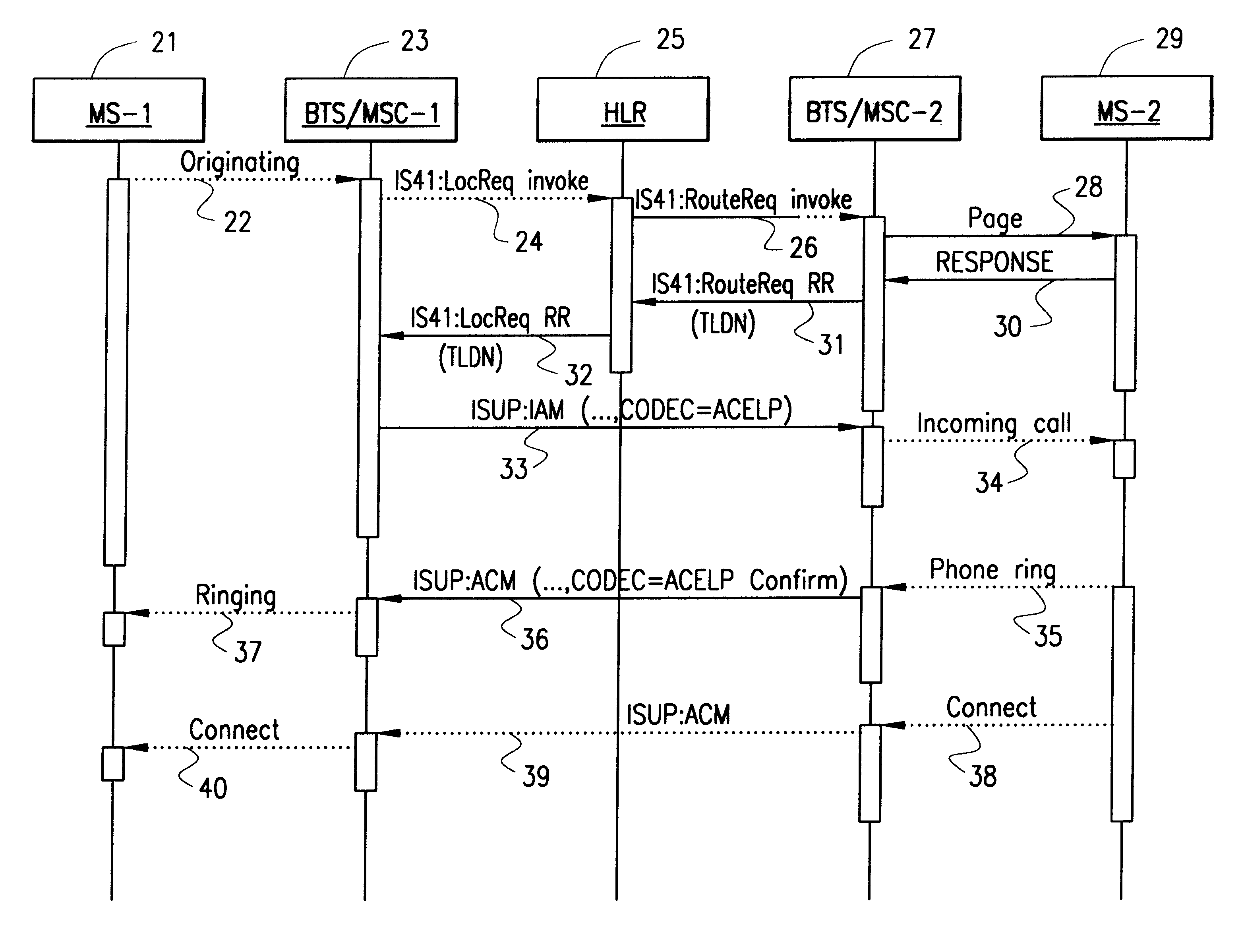End-to-end coder/decoder (codec)
a coder and decoder technology, applied in the field of telecommunication systems, can solve the problems of only supporting ms-to-ms calls, deteriorating speech quality, and tfo is applicable only to ms-to-ms calls, and cannot support calls from ms to h.323 clients
- Summary
- Abstract
- Description
- Claims
- Application Information
AI Technical Summary
Benefits of technology
Problems solved by technology
Method used
Image
Examples
Embodiment Construction
FIG. 1 is a simplified block diagram illustrating the existing methodology of Tandem Free Operation (TFO) for an MS-to-MS call being placed from a first MS (MS-A) 11 to a second MS (MS-B) 12 through a digital network 10. TFO utilizes inband signaling by replacing the least significant bit of every 16.sup.th speech sample in PCM with a TFO frame to deliver signals at 500 bits / sec that are embedded in the 64 Kbs voice path. If a full rate codec is utilized, TFO frames are transferred in the two least significant bits of every PCM sample.
TRAU-A 13 is associated with MSC-A 14, the originating MSC. TRAU-B 15 is associated with MSC-B 16, the destination serving MSC. The TFO negotiation session begins after Integrated Services Digital Network User Part (ISUP) or Primary Rate Interface (PRI) signaling has led to the seizure of a voice circuit between TRAU-A 13 and TRAU-B 15. TRAU-A determines which codecs are supported by both MS-A 11 and base transceiver station (BTS-A) 17 and sends this i...
PUM
 Login to View More
Login to View More Abstract
Description
Claims
Application Information
 Login to View More
Login to View More - R&D
- Intellectual Property
- Life Sciences
- Materials
- Tech Scout
- Unparalleled Data Quality
- Higher Quality Content
- 60% Fewer Hallucinations
Browse by: Latest US Patents, China's latest patents, Technical Efficacy Thesaurus, Application Domain, Technology Topic, Popular Technical Reports.
© 2025 PatSnap. All rights reserved.Legal|Privacy policy|Modern Slavery Act Transparency Statement|Sitemap|About US| Contact US: help@patsnap.com



